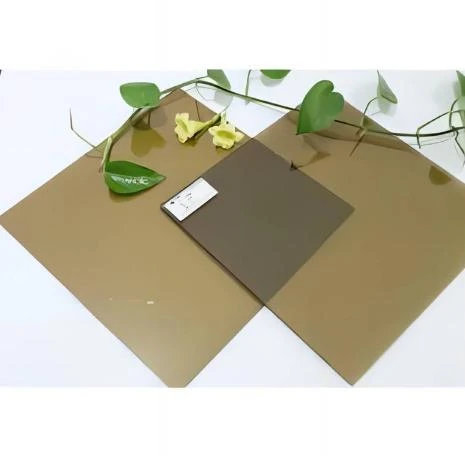Understanding UV Non-Reflective Glass Properties and Applications
In today's world, the integration of technology into everyday life has led to a growing demand for materials that enhance both functionality and aesthetic appeal. One such material that has gained popularity is UV non-reflective glass. This type of glass provides a unique solution for a variety of applications, ranging from commercial spaces to residential use, while offering the added benefit of UV protection.
What is UV Non-Reflective Glass?
UV non-reflective glass is specifically designed to minimize glare and reflection while blocking harmful ultraviolet (UV) rays from penetrating indoors. Unlike traditional reflective glass, which uses a coating to reflect light, UV non-reflective glass is treated at a molecular level to reduce glare without creating a mirror-like finish. This makes it an ideal choice for environments where clear visibility and comfort are essential.
Properties of UV Non-Reflective Glass
1. Clarity and Transparency One of the most notable features of UV non-reflective glass is its high level of clarity. It allows for an unobstructed view, making it suitable for display cases, museums, and galleries where artwork preservation is crucial.
2. UV Protection This glass effectively blocks up to 99% of harmful UV rays, protecting not only the people nearby but also valuable items from fading over time due to sun exposure.
3. Reduced Glare The non-reflective nature of this glass significantly reduces glare, which can be particularly beneficial in settings with bright lighting or outdoor visibility issues. As a result, users can experience improved visual comfort while reducing eye strain.
uv non reflective glass
4. Durability UV non-reflective glass is often made from tempered glass, which enhances its strength and resistance to impact. This ensures that the glass can withstand everyday wear and tear, making it a practical choice for various applications.
Applications of UV Non-Reflective Glass
1. Art Galleries and Museums In these environments, the preservation of artwork is paramount. UV non-reflective glass not only protects valuable paintings and artifacts from UV damage but also provides visitors with a clear view without distractions from glare.
2. Retail Displays Retailers benefit from using UV non-reflective glass in display cabinets and shopfronts. It enhances the visibility of products while protecting them from fading and damage caused by sun exposure.
3. Residential Spaces Homeowners increasingly opt for UV non-reflective glass in windows and glass doors to create a comfortable living environment. It keeps UV rays at bay, protecting furniture and fabrics from fading, while ensuring that beautiful views remain unobscured.
4. Office Buildings In commercial spaces, such as office buildings, this type of glass can contribute to a more pleasant working environment. Reducing glare helps improve concentration and productivity among employees, while the UV protection adds another layer of comfort.
Conclusion
As technology advances, the materials we use in our daily lives evolve to meet higher standards of performance and sustainability. UV non-reflective glass stands out as a versatile and practical option that addresses both aesthetic and functional needs. Its ability to block harmful UV rays while providing clarity and reducing glare makes it an essential choice for various applications. Whether in art galleries, retail stores, homes, or offices, UV non-reflective glass is proving to be an indispensable part of modern design and functionality. As more people become aware of its benefits, its popularity is likely to continue to grow, enhancing spaces while safeguarding treasures from the relentless effects of sunlight.
 Afrikaans
Afrikaans  Albanian
Albanian  Amharic
Amharic  Arabic
Arabic  Armenian
Armenian  Azerbaijani
Azerbaijani  Basque
Basque  Belarusian
Belarusian  Bengali
Bengali  Bosnian
Bosnian  Bulgarian
Bulgarian  Catalan
Catalan  Cebuano
Cebuano  Corsican
Corsican  Croatian
Croatian  Czech
Czech  Danish
Danish  Dutch
Dutch  English
English  Esperanto
Esperanto  Estonian
Estonian  Finnish
Finnish  French
French  Frisian
Frisian  Galician
Galician  Georgian
Georgian  German
German  Greek
Greek  Gujarati
Gujarati  Haitian Creole
Haitian Creole  hausa
hausa  hawaiian
hawaiian  Hebrew
Hebrew  Hindi
Hindi  Miao
Miao  Hungarian
Hungarian  Icelandic
Icelandic  igbo
igbo  Indonesian
Indonesian  irish
irish  Italian
Italian  Japanese
Japanese  Javanese
Javanese  Kannada
Kannada  kazakh
kazakh  Khmer
Khmer  Rwandese
Rwandese  Korean
Korean  Kurdish
Kurdish  Kyrgyz
Kyrgyz  Lao
Lao  Latin
Latin  Latvian
Latvian  Lithuanian
Lithuanian  Luxembourgish
Luxembourgish  Macedonian
Macedonian  Malgashi
Malgashi  Malay
Malay  Malayalam
Malayalam  Maltese
Maltese  Maori
Maori  Marathi
Marathi  Mongolian
Mongolian  Myanmar
Myanmar  Nepali
Nepali  Norwegian
Norwegian  Norwegian
Norwegian  Occitan
Occitan  Pashto
Pashto  Persian
Persian  Polish
Polish  Portuguese
Portuguese  Punjabi
Punjabi  Romanian
Romanian  Russian
Russian  Samoan
Samoan  Scottish Gaelic
Scottish Gaelic  Serbian
Serbian  Sesotho
Sesotho  Shona
Shona  Sindhi
Sindhi  Sinhala
Sinhala  Slovak
Slovak  Slovenian
Slovenian  Somali
Somali  Spanish
Spanish  Sundanese
Sundanese  Swahili
Swahili  Swedish
Swedish  Tagalog
Tagalog  Tajik
Tajik  Tamil
Tamil  Tatar
Tatar  Telugu
Telugu  Thai
Thai  Turkish
Turkish  Turkmen
Turkmen  Ukrainian
Ukrainian  Urdu
Urdu  Uighur
Uighur  Uzbek
Uzbek  Vietnamese
Vietnamese  Welsh
Welsh  Bantu
Bantu  Yiddish
Yiddish  Yoruba
Yoruba  Zulu
Zulu 

